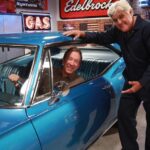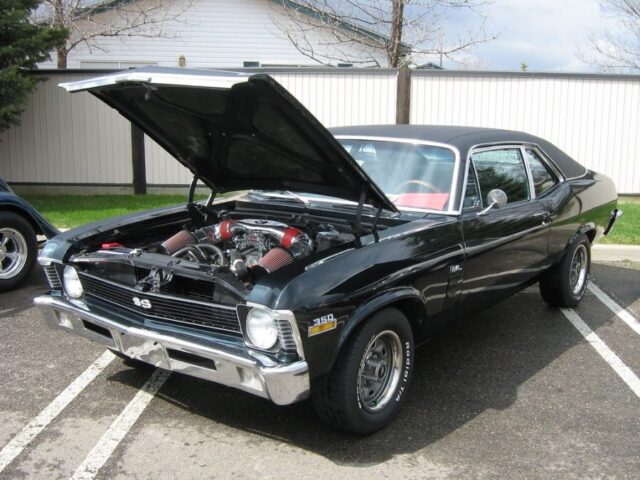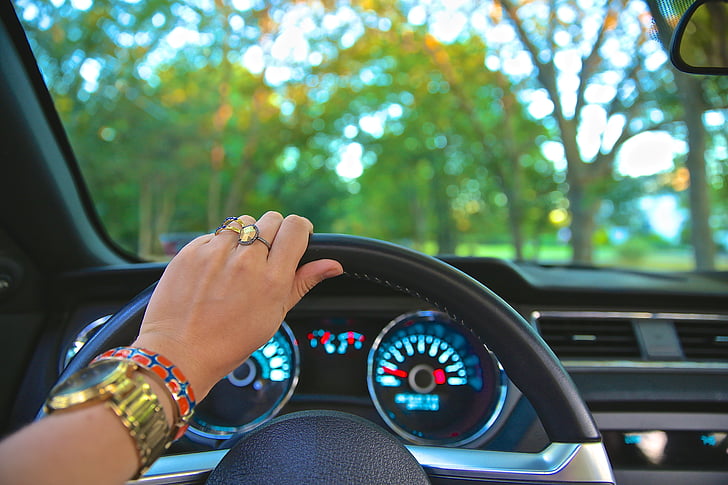
Comprehensive Guide to Essential Car Accessories: Elevating Your Driving Experience
January 8, 2024
Rolling Icons: A Comprehensive Exploration of Celebrity-Owned Classic and Vintage Cars
January 13, 2024Preserving Automotive Heritage: The Art and Passion of Restoring Classic and Vintage Cars
Introduction
Enter the enchanting realm of classic and vintage car restoration, where time-honored automobiles are rejuvenated to their former glory. In this comprehensive guide, we will delve into the captivating world of breathing new life into these automotive treasures. Whether you’re a seasoned enthusiast or a novice embarking on this journey, this article provides insights, tips, and inspiration for your restoration project.
Why Restore Classic and Vintage Cars?
Restoring classic and vintage cars transcends a mere hobby; it’s a passionate pursuit that has enraptured the hearts of countless automotive enthusiasts globally. Several compelling reasons drive individuals to undertake the journey of reviving these iconic automobiles:
- Preservation of Automotive History: Classic and vintage cars are mobile pieces of history. Restoring them helps preserve the legacy of automotive design and craftsmanship, ensuring future generations can appreciate the artistry of the past.
- Unique Design and Style: Vintage cars often showcase timeless designs and unique aesthetics that stand in stark contrast to modern vehicles. Restoration allows owners to relish the elegance and charm of yesteryear’s automotive design.
- Personal Connection: Many enthusiasts harbor a personal connection to specific classic cars, influenced by a family member who owned one or a fond memory associated with a particular model. Restoring these cars becomes a deeply sentimental endeavor.
- Investment Potential: While not everyone restores cars for financial gain, well-preserved classic and vintage cars can appreciate value over time. Some enthusiasts view them as tangible investments, often yielding significant returns if meticulously done.
Furthermore, restoring classic and vintage cars fosters a sense of community among like-minded individuals. Enthusiasts often come together through clubs, forums, and events, sharing knowledge and experiences. The satisfaction of completing a project and showcasing it at automotive shows or rallies is immeasurable.
The Timeless Appeal of Classic Cars
Classic cars possess a timeless allure that transcends generations. Whether it’s the sleek lines of a vintage sports car, the sophistication of a luxury sedan, or the rugged charm of a classic truck, each vehicle has a story to tell. Restoring these cars breathes new life into these stories, ensuring they continue to captivate and inspire for years to come.
The Restoration Process
Restoring a classic or vintage car is a labor-intensive yet highly rewarding endeavor. It involves a systematic process that blends meticulous craftsmanship, technical expertise, and a deep appreciation for automotive history. Let’s break down the restoration process into key stages:
- Assessment and Planning: Conduct a comprehensive assessment of the car’s condition, evaluating the body, engine, chassis, and interior. Create a detailed restoration plan, including a budget and timeline.
- Disassembly: Carefully disassemble the car to its bare components. Label, catalog, and assess every part for repair or replacement. Attention to detail is crucial to ensure nothing is overlooked.
- Bodywork and Paint: Repair rust, dents, and imperfections in the car’s body. Skilled craftsmen use specialized tools to restore the original contours. Once complete, the car is primed and painted to perfection.
- Engine and Mechanical Restoration: Meticulously inspect and rebuild the engine, transmission, suspension, and other components. Expertise in automotive mechanics ensures optimal performance and reliability.
- Interior Restoration: Refurbish the car’s interior, including reupholstering seats, restoring the dashboard, and refinishing trim. Attention to period-correct materials is essential for authenticity.
- Assembly and Testing: Reassemble all restored components, testing every system from electrical to brakes to ensure functionality and safety.
- Final Touches: Polish, detail, and add emblems, trim, and other finishing touches to meet the highest standards.
- Documentation and Records: Maintain detailed records of the restoration process, including photographs, invoices, and a list of parts used. This documentation adds value to the car and serves as a testament to the restoration effort.
- Preservation and Enjoyment: Choose to preserve the car’s pristine condition or enjoy driving it. Showcase it at automotive events, where enthusiasts can share their passion with others.
Restoring a classic or vintage car is a labor of love requiring dedication, patience, and expertise. However, the satisfaction of bringing a piece of automotive history back to life is immeasurable, making it a gratifying journey for enthusiasts worldwide.
Tools and Equipment
Restoring classic and vintage cars demands various specialized tools and equipment to ensure precision and efficiency throughout the process. Here’s a comprehensive list:
- Hand Tools: Screwdrivers, wrenches, pliers, hammers, mallets, chisels, and punches for disassembly, assembly, and small-scale repairs.
- Power Tools: Angle grinder, welder, electric drill, and air compressor for cutting, grinding, welding, drilling, and powering pneumatic tools.
- Automotive Specific Tools: Engine hoist and stand, jack and jack stands, diagnostic equipment, and paint sprayer for lifting, supporting, diagnosing, and achieving a professional finish.
- Restoration Consumables: Sandpaper, abrasives, paints, primers, adhesives, sealants, lubricants, and cleaners for surface preparation, smoothing, painting, bonding, and maintaining cleanliness.
- Safety Gear: Safety glasses, goggles, ear protection, gloves, and a respirator for protecting eyes, ears, hands, and respiratory system.
Investing in high-quality tools and equipment not only makes the restoration process more efficient but also ensures a safer and more satisfying experience. These tools, when used skillfully, can bring classic and vintage cars back to life, preserving their heritage for generations to come.
Common Challenges
While restoring classic and vintage cars is a rewarding endeavor, it comes with its fair share of challenges. To ensure a successful restoration project, it’s important to be aware of these common hurdles:
- Parts Availability: Finding replacement parts for older vehicles can be challenging, often requiring reliance on salvage yards, online marketplaces, and specialized suppliers.
- Rust and Corrosion: Classic cars, especially those exposed to the elements, often suffer from rust and corrosion. Removing and repairing rusted areas can be labor-intensive and requires expertise in metalwork and painting.
- Matching Paint and Trim: Achieving an authentic finish by matching the original paint color and trim materials can be difficult, involving custom paint mixing and sourcing rare materials.
- Electrical and Wiring Issues: Older vehicles may have outdated electrical systems that require extensive rewiring. Identifying and resolving electrical issues can be complex and time-consuming.
- Mechanical Complexity: Restoring the mechanical components of a vintage car, including the engine, transmission, and suspension, can be challenging due to their complexity, requiring specialized knowledge and tools.
- Budget Management: Restoration projects can easily exceed initial budgets due to unforeseen issues, costly parts, and unexpected repairs. Careful budgeting and contingency planning are essential.
- Time Commitment: Restoration projects are time-intensive and may take months or even years to complete. Patience and dedication are required to see the project through to the end.
- Documentation and Research: Accurate documentation and historical research are critical for achieving authenticity, requiring finding original specifications, manuals, and historical records.
- Upholding Authenticity: Restorers often face the dilemma of maintaining the car’s authenticity or making modern upgrades for safety and convenience. Striking the right balance can be challenging.
- Finding Skilled Labor: Finding skilled craftsmen and mechanics with expertise in vintage cars can be challenging, emphasizing the importance of building a reliable team.
Despite these challenges, restoring classic and vintage cars is a labor of love for many enthusiasts. Overcoming these obstacles not only results in a beautifully restored vehicle but also a profound sense of accomplishment and a deeper connection to automotive history.
Tips for Successful Restoration
Restoring classic and vintage cars can be a challenging yet highly rewarding undertaking. To ensure a successful restoration project, consider the following tips:
- Research Extensively: Thoroughly research the specific make and model of your vintage car. Gather historical documentation, manuals, and photographs to ensure authenticity throughout the restoration process.
- Set a Realistic Budget: Establish a detailed budget that includes the purchase price of the car, estimates for parts, tools, labor, and unexpected expenses. A well-planned budget helps you stay on track financially.
- Create a Detailed Plan: Outline a step-by-step plan for the restoration process, including timelines, milestones, and specific tasks. A clear plan keeps the project organized and helps you stay focused.
- Document Everything: Keep thorough records of every aspect of the restoration, including photographs, receipts, and notes. This documentation aids authenticity and provides valuable information for future reference.
- Build a Skilled Team: Enlist the help of skilled professionals or experienced enthusiasts specializing in vintage car restoration. Their expertise can be invaluable in overcoming technical challenges.
- Choose Quality Over Speed: Restoration is a patient and meticulous process. Avoid rushing through tasks to meet deadlines. Focus on quality workmanship, even if it takes more time. Rushing can lead to costly mistakes.
- Preserve Original Parts: If possible, preserve and restore original parts rather than replacing them. This maintains the authenticity and value of the car. Only replace parts that are beyond repair.
- Invest in Tools and Equipment: Invest in high-quality tools and equipment. While this may increase upfront costs, it will save time and frustration in the long run, ensuring better results and safety.
- Prioritize Safety: Always prioritize safety. Ensure the workspace is well-ventilated, use appropriate safety gear, and take precautions when working with chemicals and power tools.
- Join a Community: Join local or online communities of vintage car enthusiasts. They can provide valuable advice, resources, and support throughout your restoration journey.
- Don’t Overlook the Details: Pay attention to small details that make a difference, such as period-correct fasteners, trim, and finishes. These details contribute to the overall authenticity of the restoration.
- Plan for Regular Maintenance: Once the restoration is complete, create a maintenance plan to keep the car in optimal condition. Regular servicing and care will ensure the longevity of your hard work.
Restoring classic and vintage cars is a labor of love that demands dedication and patience. By following these tips and staying committed to preserving automotive history, you can bring a piece of the past back to life and enjoy the satisfaction of a successful restoration.
FAQ
Here are some frequently asked questions about restoring classic and vintage cars:
- How long does a typical restoration project take? The duration of a restoration project varies widely depending on the car’s condition, complexity, and the level of restoration desired. Some projects may take several months, while others can span several years.
- Is it more cost-effective to restore a vintage car or buy a fully restored one? The cost-effectiveness depends on your specific situation. While purchasing a fully restored vintage car may seem easier, restoring one yourself can be more cost-effective if you have the skills and resources. It can also be a more rewarding experience.
- How do I find rare or discontinued parts? Finding rare or discontinued parts can be challenging. Online marketplaces, vintage car clubs, and specialized suppliers are good places to start. You may also consider fabrication or restoration of existing parts when suitable replacements are unavailable.
- What are some common mistakes to avoid during restoration? Common mistakes include rushing the process, neglecting proper documentation, using incorrect or low-quality parts, and overlooking safety precautions. It’s essential to plan carefully, work meticulously, and seek expert advice when needed.
- Can I restore a vintage car as a beginner with limited mechanical skills? While restoring a vintage car as a beginner is challenging, it’s not impossible. However, it’s advisable to start with a simpler project and acquire basic mechanical skills through learning and practice before tackling a comprehensive restoration.
- How can I maintain the value of my restored classic car? To maintain the value of your restored classic car, keep thorough records of the restoration process, perform regular maintenance, store the car in a controlled environment to prevent deterioration, and avoid modifications that deviate significantly from the original specifications.
- What’s the difference between restoring and modifying a vintage car? Restoring a vintage car aims to return it to its original, factory-condition state, preserving its historical and authentic value. Modifying involves making changes to improve performance, aesthetics, or functionality, which can alter its originality and affect its value as a collectible.
- Can I drive a fully restored vintage car daily? While driving a fully restored vintage car daily is technically possible, it’s not always practical. Vintage cars may lack modern safety features and may require more maintenance. Many owners reserve them for special occasions or leisurely drives.
These FAQs provide insights into the world of classic and vintage car restoration. If you have more specific questions or need guidance on a particular restoration project, seek advice from experienced enthusiasts and professionals in the field.
Conclusion
Restoring classic and vintage cars is a labor of love that brings together history, craftsmanship, and a deep passion for automobiles. Throughout this journey, we’ve explored the reasons behind restoring these automotive treasures, the intricate restoration process, the essential tools and equipment, common challenges, and valuable tips for success.
By embarking on a restoration project, enthusiasts not only breathe new life into iconic vehicles but also contribute to the preservation of automotive history. The process involves meticulous planning, skilled craftsmanship, and dedication to detail. The journey demands patience, but the sense of achievement is unparalleled.
As you restore a classic or vintage car, you become a custodian of its story, ensuring that it continues to inspire and captivate future generations. Whether you’re drawn to the elegance of vintage luxury cars, the power of muscle cars, or the simplicity of classic trucks, each vehicle has a unique tale to tell.
Remember that the restoration community is a welcoming one, filled with enthusiasts who share your passion. Seek guidance, collaborate, and share your own experiences as you embark on your restoration journey. Together, we preserve automotive heritage and keep these vintage treasures on the road for years to come.
So, as you pick up your wrenches, polish your paintbrushes, and dive into the world of classic car restoration, know that you’re not just restoring a vehicle; you’re preserving a piece of history and ensuring its legacy lives on.


